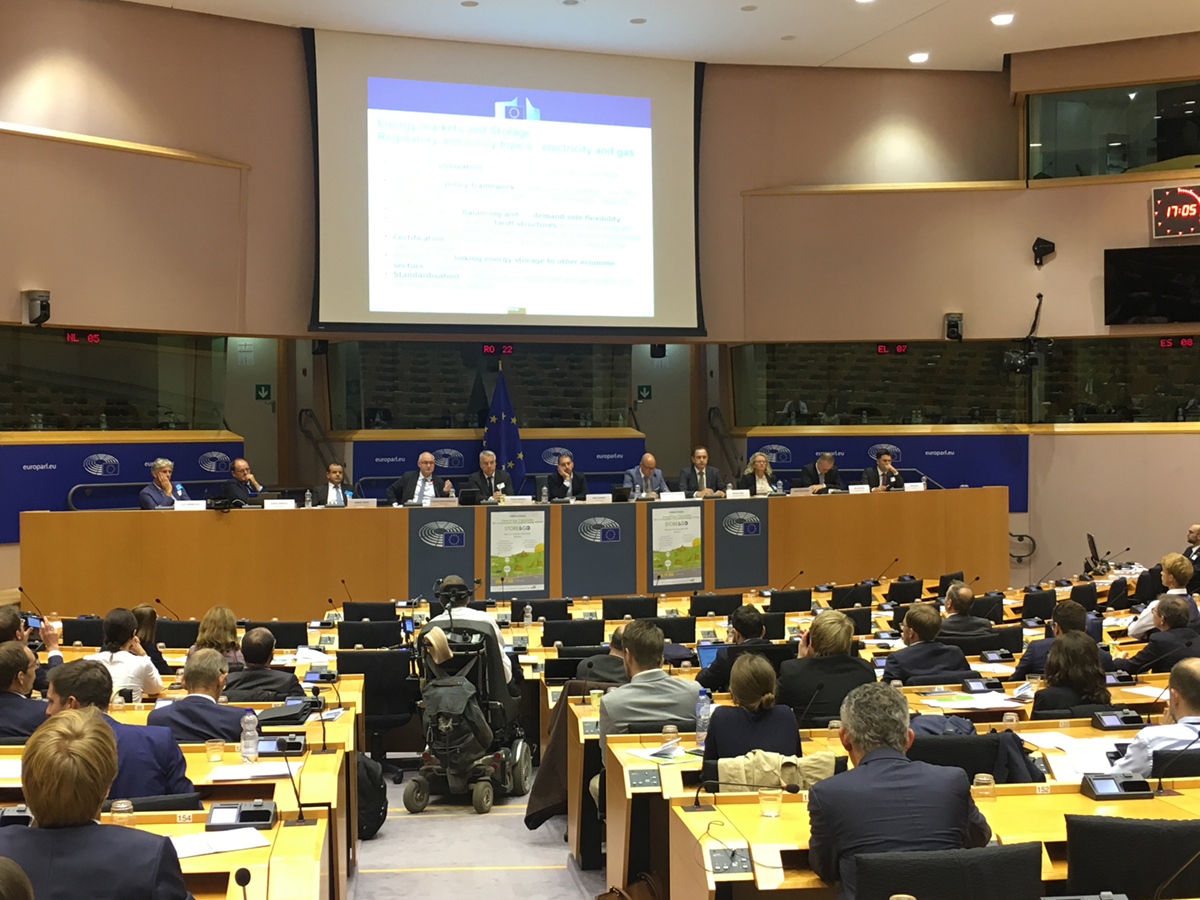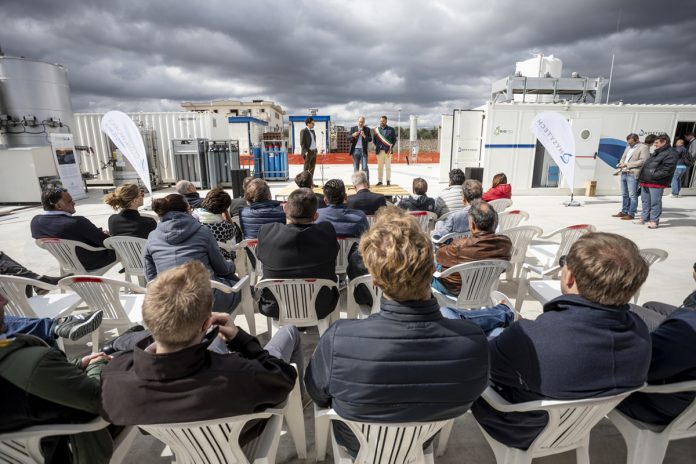The Horizon 2020 project, STORE&GO opens their second PtG demonstration site concerning renewable fuels. The results of this project in Brussels are revealed to us here by Dr Frank Graf
In December 2017, the international community gathered in Katowice, Poland, to discuss how to protect the Earth’s climate at the UN Climate Change Conference. The COP24 demonstrated once more that the participating nations must continue to work jointly on the biggest challenge of this century: implementing the Paris Agreement on climate change. Accordingly, greenhouse gases have to be reduced worldwide and drastically over the coming decades.
To reach a maximum reduction of emissions as soon as possible, no effort should be spared and all available technology paths should be considered. Renewable fuels, such as synthetic methane can play a vital role in the future European energy system. With that in mind, 27 partner organisations and companies from all over Europe collaborate in the STORE&GO (1) project to investigate the power-to-gas (PtG) technology. The project focuses on the integration of PtG into the daily operation of European energy grids to investigate the maturity level of the technology.
The role of gas in the European energy system
To make politicians more aware that PtG technologies are the key enabler for a CO2-neutral future, STORE&GO partners intensified the political dialogue in Brussels. As part of a political evening in the European Parliament (2), the project consortium discussed on October 17, 2018, with key stakeholders from the European Commission, industry and research organisations the potential of the PtG technology.
“The technology is ready but needs to be tested under real conditions”, commented Prof Dr Trimis, CEO of the DVGW Research Centre at Engler-Bunte-Institute of the Karlsruhe Institute of Technology (KIT), during the event. “Therefore, three demo plants are built and operated in Germany, Italy and Switzerland. This will allow (us) to demonstrate the technical maturity of PtG. The project will define a roadmap allowing politics to set an appropriate political framework, and industry to invest in this technology at a larger scale.
PtG is not only a technology for the large-scale energy storage of volatile renewable sources. It is also an instrument for efficient energy conversion. In the future, PtG allows for bridging the mismatch between electricity supply by renewables and continuing demand for gas by the industrial and transport sectors”, he continues.
The centrepiece of the discussions were the first results from the project. These deal with the life-cycle environmental impact assessment for PtG systems, the role of PtG in the future energy system, and an analysis of PtG licensing and regulatory frameworks in Europe, as well as in Germany, Italy and Switzerland. The results indicated that the carbon footprint from renewable methane can be more than 80% lower than the footprint of natural gas. Complex simulations of the future energy system showed a high probability that green gases will play an essential role in 2050. One of the findings is that the political framework is not yet ready to ensure a market uptake for PtG (for further information see the STORE&GO E-Book (3).

Dr Tudor Constantinescu, Principal Advisor of the European Commission – DG Energy, spoke about the role of PtG in the Energy transition from the perspective of the European Commission. He presented the major energy challenges in Europe, as well as the main policy developments in the EU regarding the European energy system, and specifically for energy markets and storage.
Furthermore, he highlighted the importance of sector coupling and the key role of long-term and large-scale storage and the advantages the PtG technology provides. Dr Constantinescu also pointed out the need to establish a regulatory framework that allows all relevant technologies to contribute to a flexible energy system.
Green gas made in Italy
Within the STORE&GO project, the first experimental experiences are being gathered at the three demo sites, of which two are already producing methane: in Falkenhagen, Germany (4), and the lately inaugurated plant in Troia, Italy. On September 27, 2018, about 50 people gathered in the Southern Italian region of Puglia to celebrate the opening of this innovative plant. The location area around Troia is characterised by a high share of wind energy and high photovoltaics (PV) production capacities. This renewable power is used to generate hydrogen during the first step.
Within STORE&GO, the existing electrolyser unit was extended by a methanation reactor from the partner Atmostat, where the renewable hydrogen is catalytically methanated using CO2. A special feature of the plant is the special CO2 capture technology by the partner Climeworks. This unit absorbs and captures the required CO2 directly from the atmosphere, therefore, closing the carbon cycle.
Also remarkable is a small-scale gas liquefaction unit by the partner Hysytech, that chills green gas to a temperature of -162°C into a liquid state, converting methane into liquefied renewable gas (LRG). This fuel can be transported and distributed to customers by truck. This makes the plant independent from pipeline access and demonstrates possible applications on islands. LRG can replace fossil LNG (Liquefied Natural Gas) as a green transport fuel for heavy-duty trucks or ships.
The plant will be tested and operated for at least 4,000 hours during the remaining time of the project until February 2020. Further industrial partners of the Italian site are ENGINEERING, who are coordinating the activities in Troia, IREN Energia and Studio BFP. They are supported by their research partners CEA and Politecnico di Torino.
The technology path towards a carbon-free future
The relevance of the Troia demo site for the energy transition was further explained at the political evening by Prof Dr Gerald Linke, CEO of the German Association for Gas and Water (DVGW). He explained a strategy on how to transition to a fossil-free energy system (5) by replacing coal and oil by gas, replacing fossil gas by renewable gas, and efficiently integrating the energy, heat and transport sectors by using PtG. Such, green gases can provide a complementary piece for the energy transition towards a fossil-free future, in the spirit of the Paris climate goals.
Please note: this is a commercial profile
References
(1) The project is funded by the European Union’s “Horizon 2020 research and Innovation programme”.
(2) For details, see www.storeango.info ‘News and Events’.
(3) www.openaccessgovernment.org Stakeholders Energy STORE&GO.
(4) See also Open Access Government October 2018, p. 333.
(5) www.dvgw.de English Topics Gas and Energy Transition.











